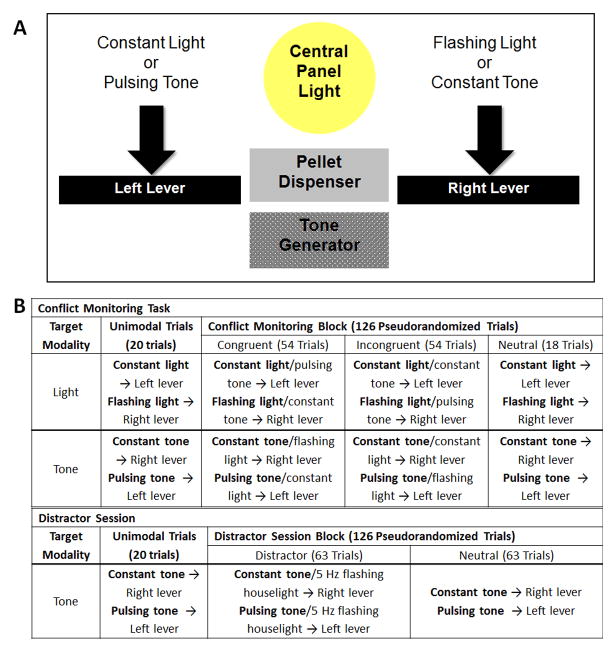Figure 1.
A. Stimulus response rules for both the conflict monitoring. The black bars represent the levers. Printed over the levers are the stimuli that are reinforced by pressing that lever. The flashing light and constant tone are presented at 20 Hz. Note the quality of the stimulus (constant vs. 20 Hz pulsing) is paired with the opposite lever across modality to prevent the animals from engaging in cross-modal matching where they learn to respond to the lever according to quality. Both the light and tone stimuli are located on the intelligence panel around the pellet dispenser. B. Conflict monitoring task and distractor session. The conflict monitoring block presents 54 congruent, 54 incongruent, and 18 neutral trials in a pseudorandomized order. The distractor session does not have congruent or incongruent trials but instead has 63 distractor trials and 63 neutral trials.

